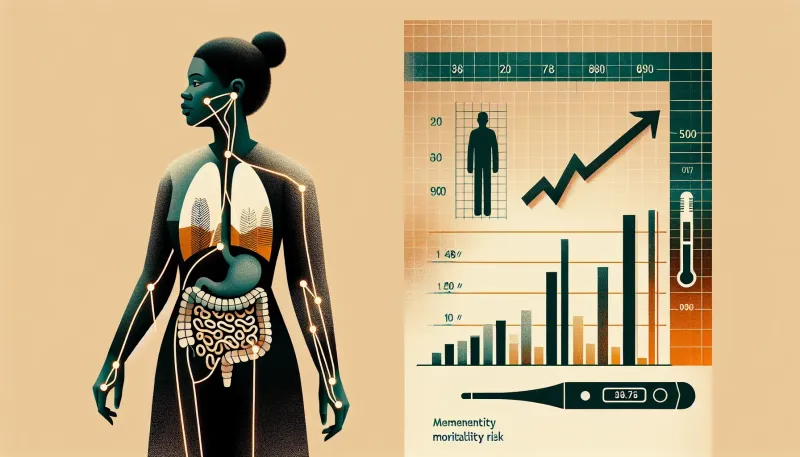Understanding the Link Between Waist-to-Hip Ratio and Mortality Risk

Explore the connection between Waist-to-hip ratio and mortality risk. Learn how this measurement can impact your health, supported by well-researched information.
In recent years, there has been an increasing focus on understanding how body composition influences health outcomes. One particular metric gaining traction is the waist-to-hip ratio (WHR). This ratio, which compares the circumference of the waist to that of the hips, has been linked to various health risks, including mortality. In this comprehensive guide, we will explore the relationship between waist-to-hip ratio and mortality risk, providing well-researched insights and valuable information on this topic.
What is Waist-to-Hip Ratio?
The waist-to-hip ratio (WHR) is a simple yet effective anthropometric measurement used to assess the distribution of body fat. It is calculated by dividing the waist circumference by the hip circumference. Unlike body mass index (BMI), which gives a general index of body weight relative to height, WHR focuses specifically on the distribution of fat in the abdominal area compared to the hips.
How to Measure Waist-to-Hip Ratio?
Step-by-Step Guide
- Measure Your Waist: Use a tape measure to measure the smallest part of your waist, just above the navel, ensuring the tape is snug but not compressing the skin.
- Measure Your Hips: Measure the widest part of your hips, covering the largest circumference around the buttocks.
- Calculate the Ratio: Divide the waist measurement by the hip measurement.
For example, if your waist circumference is 30 inches and your hip circumference is 40 inches, your WHR is 0.75 (30/40).
The Connection Between Waist-to-Hip Ratio and Mortality Risk
Several studies have indicated a significant association between the waist-to-hip ratio and mortality risk. Unlike BMI, which does not differentiate between muscle and fat, WHR provides insight into abdominal fat, which is a major risk factor for various health conditions.
Health Risks Associated with High Waist-to-Hip Ratio
Cardiovascular Diseases
Abdominal fat is closely linked to increased risk of cardiovascular diseases. Individuals with a high WHR are at higher risk of developing conditions such as hypertension, atherosclerosis, and heart attacks.
Type 2 Diabetes
Visceral fat around the abdomen is a known precursor to insulin resistance, which can lead to type 2 diabetes. Higher WHR has been correlated with an elevated risk of diabetes.
Respiratory Issues
Increased abdominal fat can impair respiratory function, leading to conditions like sleep apnea, which further exacerbates mortality risk.
Mortality Rates
Overall, individuals with a higher WHR have been shown to have higher all-cause mortality rates. This means that a high WHR increases the risk of premature death from various causes.
Strategies for Reducing Waist-to-Hip Ratio
Dietary Changes
Adopting a balanced diet, rich in fruits, vegetables, whole grains, and lean proteins, can help reduce abdominal fat. Avoiding processed foods and sugary drinks is also crucial.
Regular Exercise
Incorporating a mix of cardiovascular, strength training, and flexibility exercises can effectively reduce abdominal fat and improve WHR. Activities such as running, cycling, weight lifting, and yoga are highly beneficial.
Lifestyle Modifications
Reducing stress through meditation, ensuring adequate sleep, and abstaining from smoking and excessive alcohol can contribute to healthier body composition and reduced WHR.
Health professionals often recommend these holistic approaches for improving health metrics, including waist-to-hip ratio.
The Importance of Professional Guidance
While understanding WHR and attempting to manage it is beneficial, it is crucial to seek guidance from healthcare professionals. Physicians and dietitians can provide personalized advice and interventions to help achieve healthier body composition and reduce mortality risk.
Conclusion
The waist-to-hip ratio is a valuable measurement for assessing health risks, particularly those related to cardiovascular diseases and overall mortality. By understanding and managing your WHR through diet, exercise, and lifestyle adjustments, you can significantly reduce your risk of adverse health outcomes. Always consult healthcare professionals for personalized recommendations and strategies to improve your overall health.



























